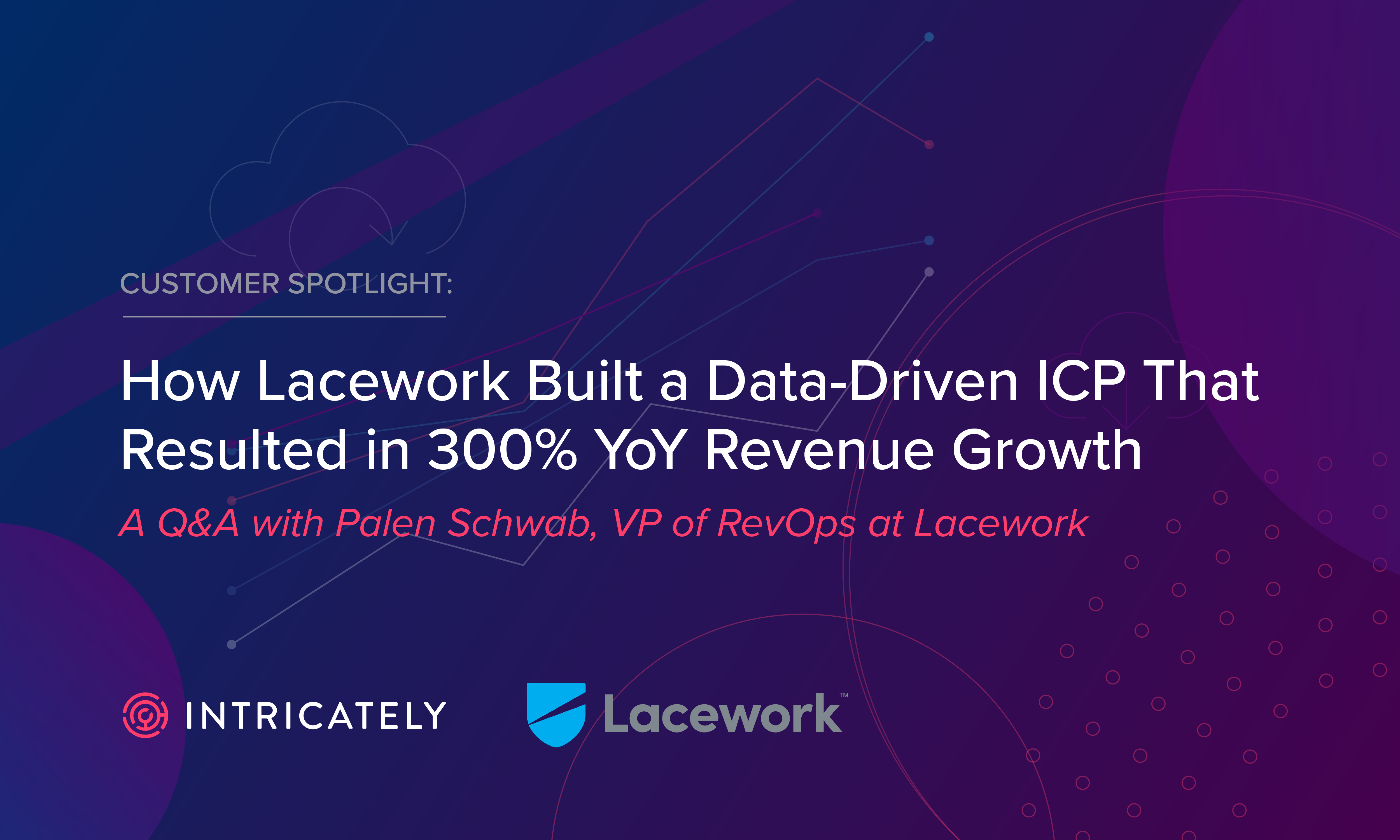
 back to all posts
back to all posts
7 Data Points To Guide Your 2021 Go-To-Market Strategy

Behind every successful company’s growth is a strong go-to-market strategy built on data.
Data—from firmographic, to technographic, to contextual—enables companies to make decisions unhindered by biases. With objective insights, companies can use data to produce a clear roadmap of how they’ll market, sell, and distribute their product.
But there’s a challenge: the amount of data available to leaders is overwhelming. While each company is unique in terms of the data they’ll need, there are seven types of data in particular to keep in mind when creating a go-to-market strategy.
1. Essential Target Customer Data
The initial step in developing a go-to-market strategy is defining an ideal customer profile (ICP), using clear data-informed definitions.
When defining the ideal customer, teams should include the following firmographic data points:
- Revenue
- Budget
- Employee headcount
- Technology spend
2. Current Customer Data
When reassessing and reinventing a go-to-market strategy, teams should look internally for growth opportunities.
For example: If the majority of a company’s clients are enterprise-level and spend more than $100k per month on a product, there may be only a small number of potential accounts left in their market. In this case, a company can evaluate if they want to expand their marketing and incentives for mid-tier or startup customers.
By analyzing the size and spending patterns of current customers, not just target customers, teams can identify opportunities for expansion and revenue growth. They’ll also understand the characteristics of their most valuable clients better, enabling them to refine their ICP.
3. Customer IT Purchasing Data
For cloud and IT vendors, it’s important to look under the hood at target accounts’ technographic and contextual data. Technographic data allows teams to see all the tools that a target account or competitor is using—like their CRM, CDN provider, public cloud hosting infrastructure—and more.
Contextual data allows teams to see how much the target account is spending on their tech stack; offering insights into spending propensity, additional needs, and contract renewals.
Intricately allows teams to see how much businesses spend on public cloud infrastructure, CDN products, and other IT solutions. Discover what your target accounts are spending by using Intricately for free.
4. Intent Data
Intent data allows teams to see which businesses are looking at a website, what pages they’re looking at, and when they visit again. With intent data, businesses can see where prospects are at in the funnel and when they’re close to making a decision.
Intent data is powerful in driving conversions, because companies can see when target accounts are actually interested in a solution or product category. This makes the messaging and funnel more supportive, rather than forced.
With tools like Leadfeeder or Zoominfo, teams can set up alerts for when specific target accounts visit a website, in addition to automated campaigns. With these features, teams can build trust with prospects who are searching for tools similar to theirs and who are ready to buy.
5. Field Marketing Trends and Event Data
According to Bizzabo research, 85% of leadership roles—Senior Managers, Executives, and Board Members—believe in-person events are essential to their company’s success. However, the effects of COVID-19 changed the outlook of event marketing in the long-term. In-person events will still be a major tool in the marketers arsenal, but they'll be accompanied by virtual and hybrid events.
To create successful events that bring people together, boast strong ROI, and promote innovative products, teams rely on event data from previous years. Event Success Platforms help event planners gather attendee demographics, engagement, surveys, data on venues, and more.
Whether it’s live polling or ROI calculators, modern event platforms help teams collect the data they need while executing marketing events seamlessly.
6. Target market and size
Understanding a company’s total addressable market (TAM)—the estimation of how much the market is worth—gives leaders insight into their potential opportunity. In order to calculate a TAM, teams need to analyze data systematically.
Tools like Crunchbase help executives keep up-to-date with the latest data on companies, funding rounds, investors, and market research to help teams understand their target market, size, and trends better.
Data related to a target market can also be used to help discover new tangential markets or regions worth diving into.
7. Competitor data
Competitive intelligence tools enable businesses to gather sales, marketing, product, and technological data on their competitors. These insights allow companies to readjust their own budget and strategy in order to outperform their competition.
For example, Intricately tracks the usage and spend of 15,000 companies that use 85 Cloud Security products (including CASBs, WAFs, DDoS solutions and more) and spend more than $5B annually. Cloud security companies can use this data to track how their competitors’ customers are using their products, product usage, customer details, and more.
With this information, vendors can make better informed messaging and pitches when communicating with target accounts.
Curious to see what technology your competitors’ customers are using and how much they spend? Try Intricately today.
Growth is Challenging, But Data Helps You Along The Way
Today’s technology and enterprise sales environment is highly competitive, and launching a new product or (or updating an old one) is challenging. The right data won’t help teams overcome every obstacle, but it will help leaders make critical decisions.
For firmographic, technographic, and contextual data on the digital infrastructure of your customers, target accounts, and competitors, try Intricately today.

3 Trends Shaping the Evolving Cloud Hosting Market

4 Ways Cloud Marketing Leaders Can Get the Most From Their Budgets in 2022

How to Perform Account Segmentation and Prioritization



How to Transform Your Marketing Data Into Actionable Insights: 3 Tips from Sense360's Mikey Renan


How Cloud Marketers Can Achieve Account-Based Marketing Success with the Right Data

